Despite the active development of medicine, the problem of infectious, including bacterial, diseases is very relevant. Bacteria are found at every step: in public transport, at work, at school. Incredible quantities of them populate doorknobs, money, computer mice, mobile phones. There are no places on our planet where these microorganisms would not be. They are found in the salty waters of the Dead Sea, in geysers with a temperature of more than 100ºС, in the waters of the ocean at a depth of 11 km, in the atmosphere at a height of 41 km, even in nuclear reactors.
Classification of bacteria
Bacteria are tiny creatures that can only be seen with a microscope, averaging 0.5-5 microns in size. A common feature of all bacteria is the absence of a nucleus, referring to prokaryotes.
There are several ways of their reproduction: binary fission, budding, thanks to exospores or fragments of mycelium. The asexual way of reproduction consists in the replication of DNA in the cell and its subsequent division in two.
Depending on the shape, bacteria are divided into:
- cocci - balls;
- rod-shaped;
- spirilla - twisted threads;
- vibrios are curved rods.
Fungal, viral and bacterial diseases, depending on the mechanism of transmission and the location of the pathogen, are divided into intestinal, blood, respiratory and external integuments.
The structure of bacteria and infections
The cytoplasm is the main part of the bacterial cell in which metabolism occurs, i.e. synthesis of components, including those affecting its pathogenicity, from nutrients. The presence in the cytoplasm of enzymes, catalysts of a protein nature determines metabolism. It also contains the "nucleus" of the bacterium - the nucleoid, without a definite shape and externally unlimited by the membrane. The entry of various substances into the cell and the removal of metabolic products occurs through the cytoplasmic membrane.
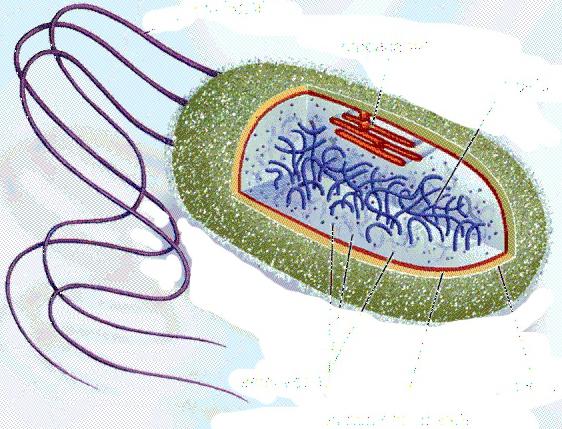
The cytoplasmic membrane is surrounded by a cell membrane, on which there may be a layer of mucus (capsule) or flagella, which contribute to the active movement of the bacterium in liquids.
Food for bacteria are a variety of substances: from simple, for example, carbon dioxide, ammonium ions, to complex organic compounds. The vital activity of bacteria is also influenced by the temperature and humidity of the environment, the presence or absence of oxygen. Many types of bacteria are able to form spores to survive in adverse conditions. Bactericidal properties, which are widely used both in medicine and in industry, have elevated temperature or pressure, ultraviolet radiation, and certain chemical compounds.
Properties of pathogenicity, virulence and invasiveness
Pathogenicity refers to the ability of a particular type of microorganism to cause bacterial infectious diseases. However, in the same species, its level can be in a wide range, in which case they speak of virulence - the degree of pathogenicity of the strain. The pathogenicity of microorganisms is due to toxins, which are the products of their vital activity. Many pathogenic bacteria are unable to reproduce in macroorganisms, however, they secrete the strongest exotoxins that cause the disease. Therefore, there is also the concept of invasiveness - the ability to spread in the macroorganism. Due to the properties described above, under certain conditions, highly pathogenic microorganisms can cause fatal diseases, and weakly pathogenic bacteria can simply be present in the body without causing any harm.
Consider some human bacterial diseases, the list of which is too large to describe everything in one article.
Intestinal infections
salmonellosis. About 700 species of serovars of the genus Salmonella can act as the causative agent. Infection can occur by water, contact-household or alimentary route. The reproduction of these bacteria, accompanied by the accumulation of toxins, is possible in various foods and persists if they are not sufficiently heat treated during cooking. Also, pets, birds, rodents, sick people can act as a source of infection.
The consequence of the action of toxins is an increase in the secretion of fluid into the intestine and an increase in its peristalsis, vomiting and diarrhea, which lead to dehydration. After passing the incubation period, which lasts from 2 hours to 3 days, the temperature rises, chills, headache, colicky pains in the abdomen, nausea, and after a few hours - frequent watery and fetid stools. These bacterial diseases last approximately 7 days.
In some cases, complications may occur in the form of acute renal failure, infectious-toxic shock, purulent-inflammatory diseases or thrombotic complications.
Typhoid fever and paratyphoid A and B. Their pathogens are S. paratyphi A, S. paratyphi B, Salmonella typhi. Ways of transmission - food, water, infected objects, source - a sick person. A feature of the disease is the summer-autumn seasonality.
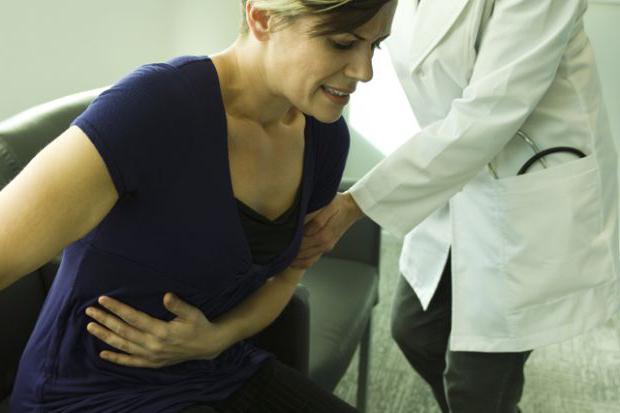
The duration of the incubation period is 3 - 21 days, most often 8 - 14, after which there is a gradual increase in temperature up to 40ºС. Fever is accompanied by insomnia, headache, lack of appetite, blanching of the skin, roseolous rash, enlarged liver and spleen, bloating, stool retention, less often diarrhea. Arterial hypotension, bradycardia, delirium, lethargy also accompany the disease. Possible complications are pneumonia, peritonitis, intestinal bleeding.
food poisoning. Its causative agents are conditionally pathogenic microorganisms. Pathogenic bacteria enter the body from food products that are either not subject to heat treatment or have undergone insufficient heat treatment. Most often it is dairy or meat products, confectionery.
The duration of the incubation period is from 30 minutes to a day. The infection manifests itself in the form of nausea, vomiting, watery stools up to 15 times a day, chills, abdominal pain, fever. More severe cases of the disease are accompanied by low blood pressure, tachycardia, convulsions, dry mucous membranes, oliguria, hypovolemic shock. The illness lasts from several hours to three days.
Dysentery. The causative agent of one of the most common intestinal infections is a bacterium of the genus Shigella. Microorganisms enter the body during the adoption of infected food, water, through household items and dirty hands. The source of infection is a sick person.
The incubation period can range from a few hours to a week, usually 2-3 days. The disease is manifested by frequent liquid stools with impurities of mucus and blood, cramping pains in the left and lower abdomen, fever, dizziness, chills, headache. It is also accompanied by arterial hypotension, tachycardia, bloating, palpation of the sigmoid colon. The duration of the disease depends on the severity: from 2-3 to 7 days or more.
Escherichiosis. This disease is also called traveler's diarrhea. It is caused by E. coli Escherichia coli enteroinvasive or enterotoxigenic strains.
In the first case, the incubation period lasts from 1 to 6 days. Signs of the disease are loose stools and cramping abdominal pain, less often tenesmus. Time of illness is 3-7 days with mild intoxication.

In the second case, the latent period can last up to 3 days, after which vomiting, frequent loose stools, intermittent fever and abdominal pain begin. Pathogenic bacteria to a large extent affect young children. The disease is accompanied by high temperature, fever, dyspepsia. Such bacterial diseases can be complicated by appendicitis, cholecystitis, cholangitis, meningitis, endocarditis, inflammatory diseases of the urinary tract.
campylobacteriosis. This is a common infection caused by the bacterium Campylobacter fetus jejuni, which is found in many pets. Occupational bacterial diseases of a person are also possible.
The incubation period lasts 1 - 6 days. The disease is accompanied by fever, gastroenteritis, severe intoxication, vomiting, profuse loose stools. In rare cases, a generalized form of the disease.
Treatment and prevention of intestinal infections
As a rule, hospitalization of the patient is recommended for effective treatment, because most of these diseases can lead to complications, as well as to reduce the risk of spreading the infection. Treatment includes several main points.
With an intestinal infection, strict adherence to a sparing diet is necessary. List of allowed products: slowing down the motor activity of the intestines and containing significant amounts of tannin - blueberries, bird cherry, strong tea, as well as pureed cereals, mucous soups, kissels, cottage cheese, crackers, steamed fish and meat dishes. In no case should you eat fried and fatty, raw vegetables and fruits.
In case of toxic infections, gastric lavage is mandatory in order to remove pathogens from the mucous membrane of the gastrointestinal tract. Detoxification and rehydration is carried out by oral administration of glucose-salt solutions to the body.
Treatment of bacterial bowel diseases necessarily involves the normalization of the stool. For this, the most commonly used agent is "Indomethocin", calcium preparations, various sorbents, the most accessible of which is activated carbon. Since bacterial diseases are accompanied by dysbacteriosis, drugs are prescribed to normalize the intestinal microflora (Linex, Bifidumbacterin, etc.)
As for antibacterial agents, depending on the type of pathogen, antibiotics of the groups of monobactams, penicillins, cephalosporins, tetracyclines, chloramphenicols, carbapenems, aminoglycosides, polymyxins, quinolones, fluoroquinolones, nitrofurans, as well as mixed preparations of sulfonamides can be used.
To prevent human bacterial diseases, the list of daily activities should contain the following items: personal hygiene, careful heat treatment of the necessary food, washing vegetables and fruits before eating, using boiled or bottled water, short-term storage of perishable foods.
Respiratory tract infections
For the respiratory tract, bacterial and viral infections are most characteristic, which are usually seasonal. Human bacterial and viral diseases differ primarily in localization. Viruses affect the entire body, while bacteria act locally. The most common viral diseases are SARS and influenza.
Bacterial diseases include the following respiratory tract infections:
Tonsillitis(tonsillitis) can be caused by both viruses and bacteria - mycoplasma, streptococcus, chlamydia (A. Haemolyticum, N. Gonorrhoeae, C. Diphtheriae). Accompanied by changes in the palatine tonsils, sore throat, chills, headache, vomiting.
Epiglottitis. The causative agents are the bacteria S. Pneumoniae, S. Pyogenes and S. Aureus. The disease is characterized by inflammation of the epiglottis, accompanied by narrowing of the larynx, rapid deterioration, sore throat, fever.
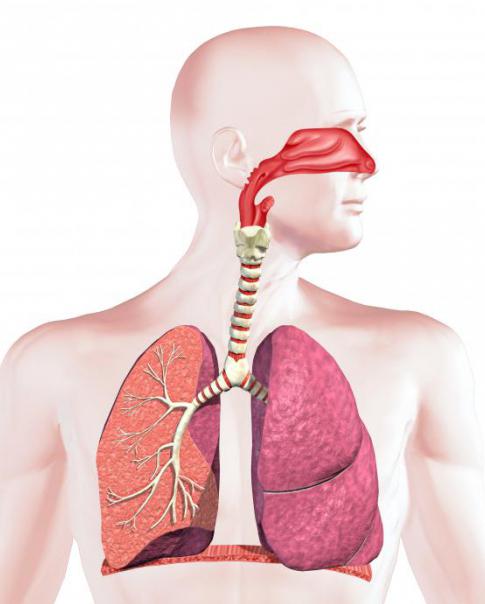
Due to the severe course of the disease, mandatory hospitalization of the patient is required.
Sinusitis- inflammation of the maxillary sinuses, caused by bacteria that have entered the nasal cavity through the blood or from the upper jaw. It is characterized at first by localized pain, which then spreads, turning into a "headache".
Pneumonia. This is a disease of the lungs, during which the alveoli and terminal bronchi are affected. Pathogenic bacteria - streptococci, staphylococci, Klebsiella pneumoniae, pneumococci, Haemophilus influenzae and Escherichia coli. The disease is accompanied by cough with sputum, fever, shortness of breath, chills, headaches and muscle pain, loss of appetite, increased fatigue, intoxication weakness.
Treatment and prevention of respiratory tract infections
In the treatment of infections, hospitalization of the patient is carried out only in cases of severe and neglected course of the disease. The main means are antibiotics, selected individually depending on the type of pathogen. Treatment of the nasopharynx can be done using local antiseptics ("Gexoral", "Septifril", "Stopangin", "Kameton", "Ingalipt"). Additionally, it is recommended to resort to inhalation, physiotherapy, breathing exercises, manual therapy, chest massage. When using combined agents with an antiseptic and analgesic effect at the onset of the disease (preparations from medicinal plants, TeraFlu, Anti-Angina, Strepsils, NovaSept), there is probably no need for further use of antibiotics.
Prevention of bacterial diseases of the respiratory system includes the following activities: walks in the fresh air, breathing exercises, preventive inhalations, smoking cessation, the use of cotton-gauze bandages when in contact with patients.
Infections of the outer integument
On human skin, which has certain properties that protect it from microorganisms, there is a huge amount of peacefully existing bacteria. If these properties are violated (excessive hydration, inflammatory diseases, injuries), microorganisms can cause infection. Bacterial skin diseases also occur when pathogenic bacteria enter from the outside.
Impetigo. There are two types of disease: bullous, caused by staphylococci, and non-bullous, the causative agents of which are S. aulreuls and S. Pyogenes.
The disease manifests itself in the form of red spots that turn into vesicles and pustules, which are easily opened, forming thick yellowish-brown scales.
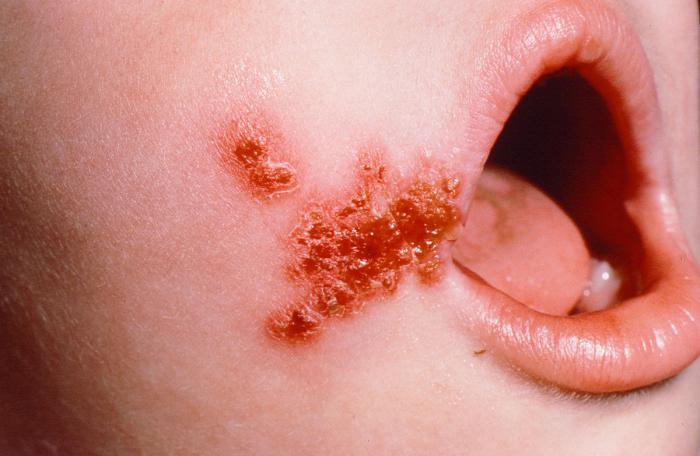
The bullous form is characterized by blisters 1-2 cm in size. When complicated, bacterial diseases cause glomerulonephritis.
Furuncles and carbuncles. The disease occurs when staphylococci penetrate deeply into the hair follicles. The infection forms an inflammatory conglomerate, from which pus subsequently appears. Typical locations for carbuncles are the face, legs, and back of the neck.
Erysipelas and cellulite. These are infections that affect the skin and underlying tissues, the causative agents of which are streptococci of groups A, G, C. Compared to erysipelas, the location of cellulitis is more superficial.
Typical localization of erysipelas - face, cellulite - calves. Both diseases are often preceded by trauma, skin damage. The surface of the skin is red, edematous, with uneven inflamed edges, sometimes vesicles and blisters. Accompanying symptoms of the disease are fever and chills.
Erysipelas and cellulitis can cause complications, manifested in the form of fasciitis, myositis, cavernous sinus thrombosis, meningitis, various abscesses.
Treatment and prevention of skin infections
It is recommended to treat human skin bacterial diseases with topical or general antibiotics, depending on the severity and type of infection. Various antiseptics are also used. In some cases, their use continues for a long time, including by healthy family members for prevention.
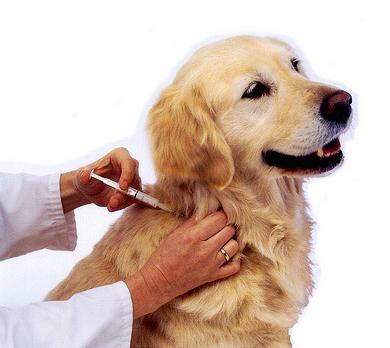
The main preventive measure that prevents the occurrence of skin infections is personal hygiene, the use of individual towels, as well as a general increase in immunity.
Animal infections
Mention should also be made of bacterial animal diseases transmitted to humans and called zooanthroponoses. The source of infection are animals, both domestic and wild, from which you can become infected during hunting, as well as rodents.
We list the main bacterial diseases, the list of which includes about 100 infections: tetanus, botulism, pasteurellosis, colibacillosis, bubonic plague, glanders, melioidosis, ersiniosis, vibriosis, actinomycosis.
